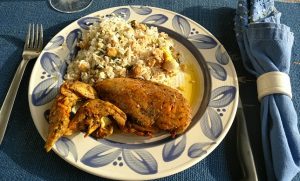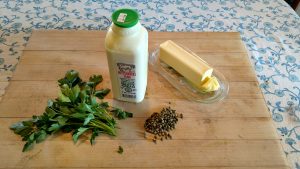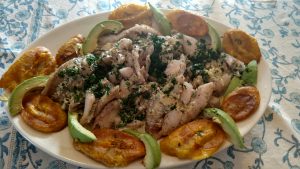Summertime and the livin’ ain’t easy. Though it’s been a mild one thus far, the heat will come, that’s guaranteed (global warming deniers aside). Thus we think of salads for summer. And, for some time now, pasta salads have come to the fore. My favorite of these has always been that great perennial, Macaroni Salad. Nothing says better, pasta salad, than this one. It’s simple, it’s wonderful; and you can pack ’em with whatever you want be it herbs or vegetables.
I’ve experiment with this dish for years; and I’ve come up with what I consider one of the best renditions of all. For most, macaroni salad is just macaroni swimming in mayonnaise. If you like that, great. But I’ve discovered a novel variation: 1/2 mayonnaise and 1/2 sour cream. A marvelous combinations of flavors Add to it lime juice, seasoning, roasted red peppers, cilantro and, for those who like to give it a kick, jalepeño pepper, and you’re set. Bring on summer!
Note that this dish can be served at room temperature or chilled. Your choice. If using at room temperature, it’s best to let the pasta sit for 20 minutes after preparing so as to let all the flavors come together. Some state that, if serving chilled, add a drizzle of olive oil and toss to have it glistening again.
MACARONI SALAD
1 pound package elbow macaroni
½ cup mayonnaise
½ cup low fat sour cream
Juice of half a lime
Salt and ground black pepper to taste
1 tablespoon fresh chopped oregano or 1 teaspoon dried
1 (7-oz) jar roasted red peppers, chopped
½ cup fresh chopped cilantro
1 jalepeño pepper, seeded and finely chopped (optional)
1. Cook elbow macaroni according to package directions. Drain under cold running water to cool.
2. In a large bowl, whisk together the mayonnaise, sour cream, lime juice, salt, pepper, and oregano.
3. Add macaroni and toss to coat. Fold in roasted peppers, cilantro, and jalepeño, if using
Yield: 4-6 servings.

















